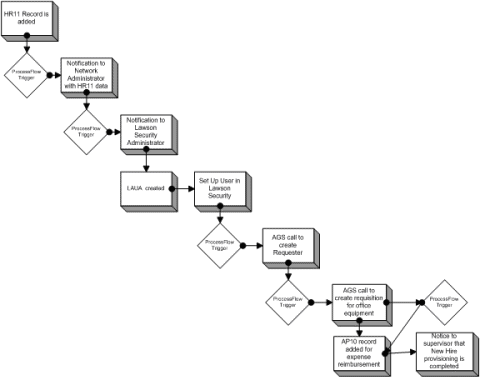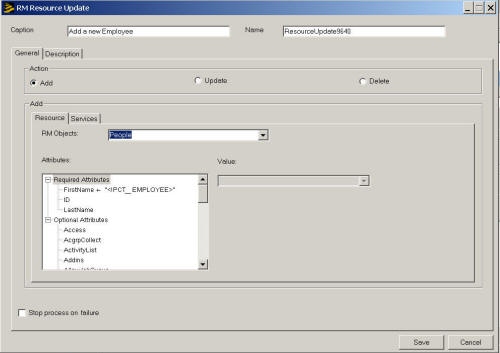1. Guest Spot: The Devil is in the Details
(by Jeanne Gulbranson, Strategist, CIBER Enterprise Solutions)
Much of the time, for most people (including this author), our “environmental” address is the State of Change. We arrived here quietly and quickly; the move was not heralded with address change forms at the Post Office, new schools for the kids, and Mayflower moving vans. We appeared at our jobs one morning, and recognized that our world, as we knew and understood it, was not going to be exactly the same again. The familiar objectives, duties, processes, information, structures, ways of doing business were not going to be what and how they always were. Even more startling was the realization that we needed to help others make this move: the people who work for us, and the people whom we work for and with.
To weather the dynamic, and sometimes intimidating, climate of this State of Change, our mandate is to manage and lead others, along with their baggage of “the way we were,” into and through the State of Change, to the “promised land”—the land of faster, more efficient, more profitable, greater growth and success. So, where is the map to lead this adventure? Where are the mileposts, the gas stations, the closest Starbucks?
The map, and the method of leading the way through the State of Change, is not something large and intrusive, or even highly visible. It is subtle, continuous. The little things make the difference. The devil is in the details.
To read more, you can download the entire paper by visiting CIBER's download site (site registration required).
2. PFI Part 2: Orchestration & Integration
In last month’s ProcessFlow Integrator kick-off article (see https://www.danalytics.com/guru/letter/archive/2008-02.htm), I hinted about some of the reasons why you would want to use ProcessFlow Integrator to orchestrate your business processes. This month, let’s look at the ideas of orchestration and integration in a bit more detail, remembering that orchestration and integration are not mutually exclusive.
Think of the typical events that are required when you hire a new employee. Why not use ProcessFlow Integrator to handle all the updates/notifications that are needed for IT accounts, asset provisioning (i.e. new computer, desk, furniture, etc.) and security access, orientation/training, etc:

This diagram just covers Lawson-related activities. Other systems which need to know about a new hire might be non-Lawson, such as the VOIP phone system, which needs to assign a new phone number and update the corporate directory. In return, the VOIP might just pass back the new employee’s extension, which can trigger another process to plug that into HR11.
Or, perhaps, it’s another Lawson system that’s not so tightly integrated with the business applications, say Resource Management. One of the realities that Lawson clients are quickly discovering as they migrate to LSF9 is that their old ways of account provisioning (i.e. adding an RD30 record via WEBUSERS, etc.) no longer work.
The only reasonable/supported way to add/change/remove users, change user attributes (i.e. the user’s COMPANY and EMPLOYEE for Employee Self-Service, etc.) and group assignments in Lawson Security’s Resource Management is to use ProcessFlow Integrator and its ResourceUpdate node:

In summary, remember that orchestration might also include integration—specifically the need to notify other systems about Lawson transactions, such as hiring of a new employee. The whole idea of orchestration and integration is that your goal is to achieve a hands-off, automated process.
3. Worthwhile Reading
Don't Forget About Change Management
Only the foolhardy, heedless of their own peril, fail to marry technological advances with cultural change. Pretty much anyone who has spent time in a modern enterprise can think of one or two major initiatives that struck out because the implementers failed to capture the hearts and minds of key stakeholders.
- QUOTE OF THE ISSUE –
“Nearly all men can stand adversity,
but if you want to test a man's character,
give him power.”
-- Abraham Lincoln
BIReview.com, February 14, 2008
http://www.bireview.com/bnews/10000827-1.html
MSSQL: Uncover Hidden Data to Optimize Application Performance
Many application performance problems can be traced to poorly performing database queries; however, there are many ways you can improve database performance. SQL Server 2005 gathers a lot of information that you can use to identify the causes of such performance issues.
MSDN Magazine, January 2008
http://msdn.microsoft.com/msdnmag/issues/08/01/SqlDmvs/default.aspx
50,000 Marriott Employees Get Online Health Alert System
The system sends their doctors automated alerts of possible problems. One danger: doctor overload.
Information Week, February 4, 2008
http://www.informationweek.com/story/showArticle.jhtml?articleID=206101305
4. Lawson Tips & Tricks
When you install the "wfdata" jar for ProcessFlow solutions on an LSF9 (Windows) server, you might encounter an error referencing jnilauntdll.dll.
Beginning system executables.
Executable report for perl:
Return code: 0
perl standard error: java.lang.UnsatisfiedLinkError: E:\linte\gen\bin\jnilauntdll.dll: Can't find dependent libraries
perl standard error: at java.lang.ClassLoader$NativeLibrary.load(Native Method)
perl standard error: at java.lang.ClassLoader.loadLibrary0(ClassLoader.java:1586)
perl standard error: at java.lang.ClassLoader.loadLibrary(ClassLoader.java:1511)
perl standard error: at java.lang.Runtime.loadLibrary0(Runtime.java:788)
perl standard error: at java.lang.System.loadLibrary(System.java:834)
perl standard error: at com.lawson.rdtech.jnilauntdll.JniLauntdll.<clinit>(Unknown Source)
perl standard error: at com.lawson.lawsec.authen.LawsonSecurityXRefImpl.getRMIdForCurrentUser(Unknown Source)
perl standard error: at com.lawson.lawsec.authen.LawsonUtil.getRmIdForCurrentUser(Unknown Source)
perl standard error: at com.lawson.bpm.impexp.ImportExport.upload(Unknown Source)
perl standard error: at com.lawson.bpm.impexp.ImportExport.importData(Unknown Source)
perl standard error: at com.lawson.bpm.impexp.ImportExport.main(Unknown Source)
perl standard error: Exception in thread "main"
The solution is to make sure that %GENDIR%\bin is included in the %PATH% used during the install (i.e. if you're using "enter.cmd"). This is because jnilauntdll.dll needs to call routines in launtdll.dll.